Top Tips for Cycling Saddle Comfort!
Poor saddle comfort is a common issue in cycling. Many cyclists also consider saddle pain just part of riding a bike. However; if you’re bike and saddle is set up correctly, you wont have to put up with pain down there! When you are uncomfortable or poorly supported on your saddle, you may also get hand numbness or neck and shoulder pain.
Most people blame their saddle as soon as they get pain or numbness while cycling. Read on to learn why this is often not the case!
Julie Pham is a physiotherapist, podiatrist and bikefit expert. She is also a passionate cyclist and triathlete competing in the 2024 Tour of Margaret River in the Star Physio Allstars Team and a regular in the WA Triathlon Scene. Julie shares the top reasons your bike seat (aka saddle) might not be working for you and how to improve your saddle comfort!
-
Where you’re sitting on the saddle changes comfort.
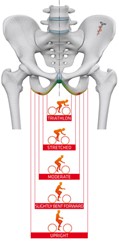 Assessing where you sit on a saddle is often overlooked. The key is understanding that a bike seat is designed to support you largely on ‘bony’ tissue.
Assessing where you sit on a saddle is often overlooked. The key is understanding that a bike seat is designed to support you largely on ‘bony’ tissue.
Road, Gravel and MTB Saddle Comfort.
In more upright cycling positions, such as road, gravel or mountain bike riding, this support should be on your sit bones, The picture below shows a before and after bikefit saddle mapping at Star Physio.
The left hand picture shows high load in the pubic or front of saddle area which was causing the cyclist saddle pain and numbness. With the same saddle, in a new position, we were able to offload the pubis and shift the load back to the sit bones. This led to a very happy and saddle pain free cyclist!
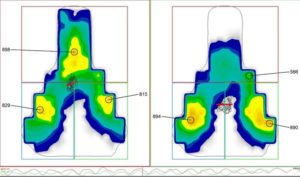
Our German Partners Gebiomized provide us with world-class saddle analysis software meaning we can view and analyse where you are sitting with ease.
Time Trial and Triathlon Saddle Comfort.
In the case of a time trial set up your ‘pubic rami’ or front of the pelvis will take more load. Specific time trial saddles such as the Gebiomized Stride are designed to give support and cushioning in these positions. Assessment is still critical to ensure stability to avoid friction related saddle pain and high pressure areas.
For racing or more aggressive road positions, a combination of sit bone and pubic rami support may be used, depending on the individual.
There will always be a component of ‘soft tissue’ load however, balancing this with appropriate bony load will alleviate most saddle pain that arises from excessive pressure or friction.
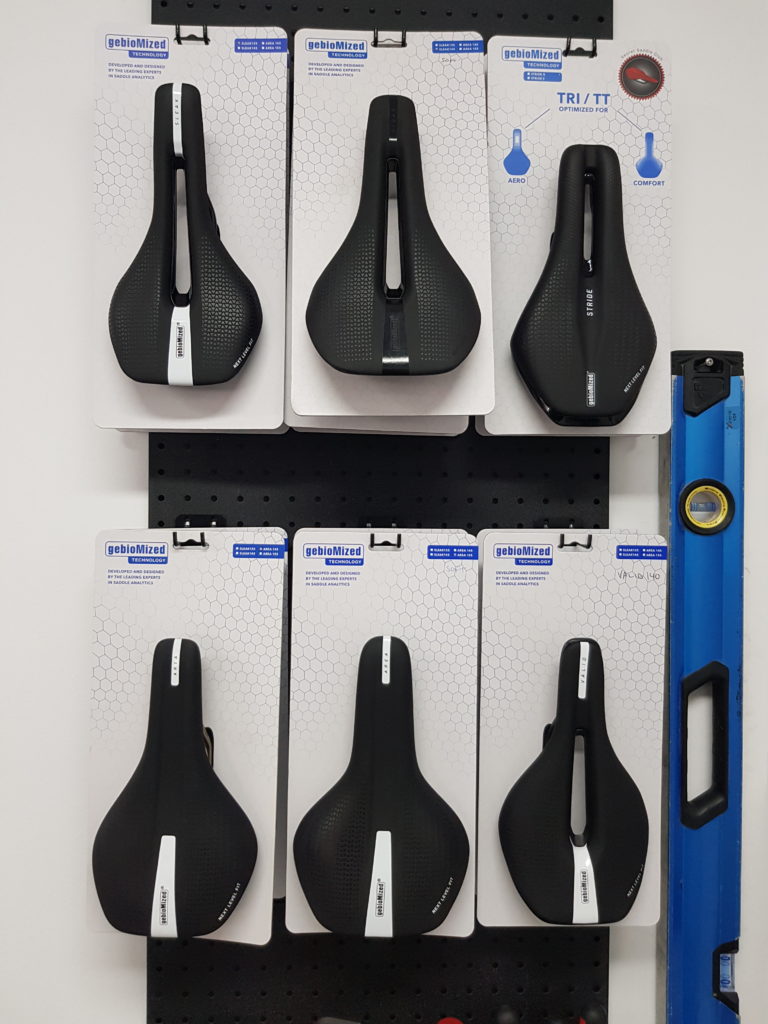
The Gebiomized Stride (top right) was used by more professionals at the 2023 Ironman World Championships than any other saddle!
-
Your overall position changes saddle comfort
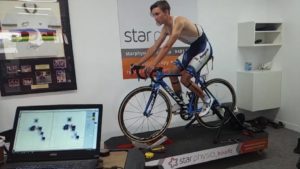
Jai Hindley. Winner, 2022 Giro D’Italia
Reach
Correct saddle height and handlebar reach are two key factors that significantly reduce saddle pain. If someone’s reach is excessive, they may find themselves moving towards the front of the saddle to reach the brakes, leading to an increase in soft tissue pressure in the pubic zone. Over time, this will result in saddle pain and potentially saddle sores, numbness and even erectile dysfunction in males.
Saddle Height
When the saddle is too high, cyclings will commonly rock their pelvis to reach the pedal under load leading to friction related saddle pain. Another compensation for a high saddle is moving to the nose of the saddle to get closer to the pedals. This is a common cause of [pressure related saddle pain.
Check your position before you buy a new saddle!
Commonly, when a cyclist gets saddle pain, the first thing he or she does is buys a new saddle. Our international partners in saddle pain research agree that 80% of the time, the bike position is the primary culprit for saddle pain!
Before you go and spend money on another saddle, consider your position on the bike and remember, just using side on video analysis will only tell you a small part of the picture! Without analysing the contact at the saddle, you are merely guessing! Check out how a bikefit at Star Physio works here!
-
Width, shape and density for saddle comfort.
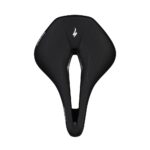
Specialized Power Saddle

Gebiomized Area Saddle
If you do need a new saddle, there are a number of factors to take into account!
Saddle Width
The appropriate width for a saddle is determined by the size and shape of the pelvis and riding position. If a pelvis has a sit bone width of 144mm, we may require 144mm or more of saddle area for adequate support. In a time trial bikefit position supported mainly on the pubic rami, the sit bone width will be effectively irrelevant.
Saddle Shape
The next important width is where the thighs need to move up and down to push the pedals. The ideal shape here is determined by a combination of pelvis width, thigh size and pelvis angles. This can be highly variable!
In the current market there are a number of “V shaped” saddles such as the Specialized Power. We commonly see issues with cyclists with bigger thighs or a smaller pelvis. These cyclists are unable to get back onto their sit bones for support due to the width in the mid part of the saddle. This causes excessive pressure and loading on the front of the saddle with poor saddle comfort, sores and numbness.
Have a look at the difference between the Power saddle and the Gebiomized Area saddle above. The difference in shape may appear subtle, but for some cyclists it can be a game changer for saddle comfort!
To add another layer of complexity when considering width, may saddles may quote ‘144mm’ width but display excessive curvature meaning their ‘true’ width is closer to 130mm!
Saddle density
The final factor in saddle comfort is the density of the foam or gel on the saddle. The best saddle manufacturers on the market spend a lot of time developing foam that gives some relief of pressure, but maintains it’s support over the duration of a ride.
A lot like a soft couch or mattress, when you first sit down it may feel comfortable, but after time, the lack of support starts causing pain! Many of the cheaper saddles on the market feel soft initially, then lose all support leading to poor saddle comfort over a ride.
Our Gebiomized range of saddles have different foam densities in certain parts of the saddle which have been developed with years of research.
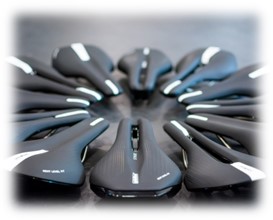
Star Physio carry the full range of Gebiomized saddles.

Star Physio carry the full range of Gebiomized saddles.
Saddle Comfort Summary…
There are many factors that influence our saddle comfort while cycling. All of these are adjustable, but the bikefit analysis must allow an accurate understanding of the individual. This includes their size, shape and flexibility, followed by analysis of bike position and saddle loading and support.
There are endless shapes of saddles available on the market. We see patients who have tried many saddles trying to get comfortable by the time they book in for a bikefit! We often find poor saddle position even after previous bikefit. For some, their first saddle may have worked perfectly!
Understanding what shape, size and foam density will be appropriate for you will indeed impact comfort. Most importantly, having your bike in the correct position with an expert bikefit will make the biggest difference to your saddle comfort! But beware, not all bikefits are the same!!
Our first goal is always to use our clients current saddle, however when out testing shows that the saddle just wont work, we have the incredible Gebiomized saddles available in the clinic. All Gebiomized saddles purchased during a bikefit come with a 14 day money back guarantee for our clients.
We highly recommend booking in for a bikefit PRIOR to buying a new saddle! The Star Physio expert Bikefit team are highly equipped to direct you in the appropriate direction saddle-wise if your current seat will not work with optimal changes, but more often, getting the right fit solves the problems!!
Call our team on 64249578 to book your fit or if you have any further questions or book online here!

cycling experts TOMR
Star Physio Allstar Cycling Team at the Final Tour of Margaret River The Star Physio All Stars Cycling Team competed in the final ever Tour of Margaret River in November.It was a special event.It also marked the end of an era in Western Australian cycling. A Strong...
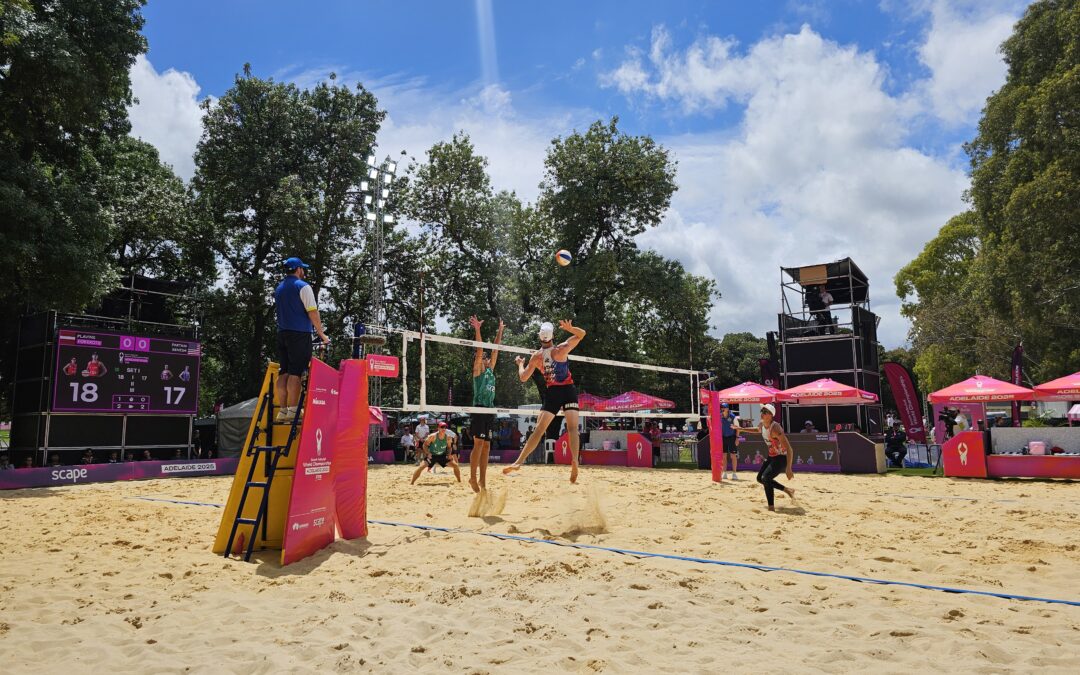
Beach Volleyball Physio
Star Physio Represented at the World Beach Volleyball Championships in Adelaide Star Physio was proud to be represented on the world stage recently. Principal Physiotherapist Damian Oldmeadow attended the World Beach Volleyball Championships in Adelaide as a guest of...

Soccer Physiotherapy
Star Physio Supports Fremantle United at the Singa Cup in Singapore Star Physio was proud to deliver high-level soccer physiotherapy support to the Fremantle United Soccer Club as they travelled to Singapore in November to compete in the prestigious Singa Cup, one of...
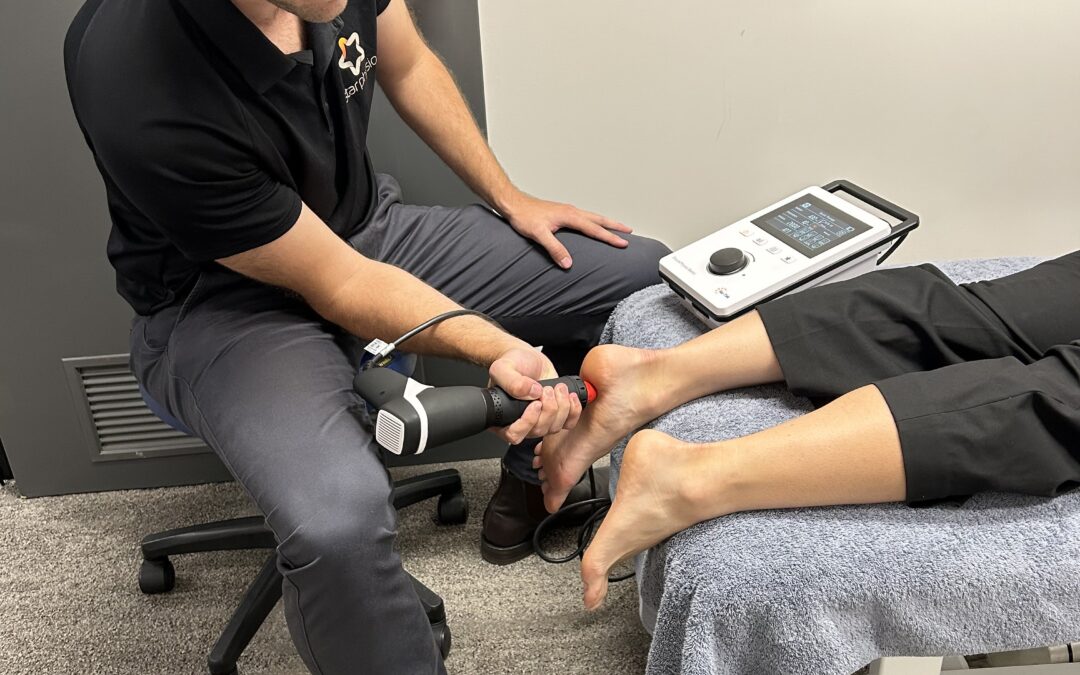
Footwear for injury
Foot Pain & The Best Footwear Choices: Advice From Our Podiatry Perth Team Foot pain affects people of all ages and lifestyles, and when not managed properly, it can significantly interrupt daily movement and activity. As a clinician working in Podiatry Perth, Dr...
